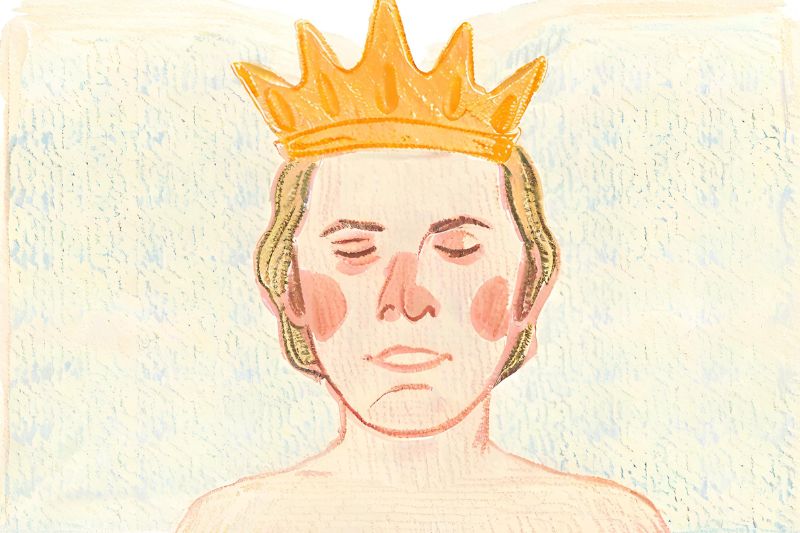There are so many types of therapy out there that you would be forgiven for feeling a little overwhelmed when it comes to finding one that’s right for you. When you think about it, though, there are also lots of anxiety-related conditions. On top of that, individual anxiety disorders can affect people in very different ways. It makes sense, then, that we require a variety of therapeutic approaches to meet such a range of needs.
In the UK, cognitive behavioural therapy (CBT) is the most commonly prescribed therapy. Studies confirm that it is a highly effective treatment for a wide range of mental health conditions. However, what you might not know is that CBT forms the basis of a number of newer therapies that incorporate other approaches like mindfulness.
In this article, ManageMinds takes a closer look at acceptance and commitment therapy (ACT), and how it may be particularly useful for those dealing with phobias like thanatophobia. Let’s get started!
What is thanatophobia?

Thanatophobia refers to an intense fear of death or the process of dying. Those who suffer from thanatophobia find themselves preoccupied with the idea of death and may severely restrict the way they live their lives to avoid having to face anything related to the topic.
Someone with thanatophobia may fear some or all of the following:
- Their own death
- The death of loved ones
- Witnessing a death
- Getting sick
- Funeral homes
- Hospitals & hospices
- Graveyards
- Ghosts
- Symbols of death (e.g., skulls)
Thanatophobia is an interesting phobia because we will all die and this is a fact that scares everyone to a certain degree. Indeed, those with thanatophobia may wonder how the rest of us get on with our lives with this dark knowledge looming over us.
Furthermore, because death is a fact of life, it is discussed openly and depicted in the media on a regular basis. Whether it’s a harrowing news story splashed on the front of every national paper, or someone on Facebook announcing the passing of a grandparent, you can barely get through a day without being confronted with the reality of death. As a result, people with severe thanatophobia may find themselves becoming increasingly reclusive and isolated.
The notion of thanatophobia was first discussed by Freud, who proposed that it was a result of an unconscious belief in one’s own immortality. You can learn more about this perspective in his Thoughts for the Times on War and Death essay series.
Causes
It can be hard to pinpoint the exact cause of a phobia because they tend to be the result of multiple factors, some of which may be unconscious. That is, our brain has repressed them to protect us from harm. This is particularly true of childhood trauma, which often plays a role in the development of phobias.
Thanatophobia may also be the result of socially learned responses. For example, if you grow up witnessing an influential figure in your life get incredibly anxious around the idea of death, you may adopt these behaviours too. Some phobias also have a genetic component, in that certain people are predisposed to be more anxious than others.
A fear of death is particularly common in those who suffer from panic disorder or PTSD. In some ways, death is the ultimate fear, because it is real and final and we cannot escape it. It makes sense, then, for very anxious people to latch onto it as a phobia.
Another group that is particularly susceptible to thanatophobia are those suffering from serious and/or long-term illness. This is understandable as death is a much more immediate and palpable concern for those in poor health.
Symptoms
Physical symptoms of thanatophobia are similar to those of most phobias. When encountering something death-related or thinking about death, those with thanatophobia may experience any or all of the following:
- Nausea
- Sweating
- Shaking
- Rapid breathing
- Heart palpitations
- Blurred vision
- Digestive problems
- Panic attacks
As mentioned above, it is completely normal to fear death, be it your own or that of a loved one. However, it becomes a phobia when the anxiety interferes with your ability to function on a day-to-day basis. Behavioural symptoms that signal thanatophobia include:
- Strong reactions to mentions or depictions of death
- Isolation (particularly from loved ones)
- A refusal to visit places like hospitals
- Social withdrawal
- Taking excessive safety measures
- Body-checking (for signs of illness)
- Reassurance seeking
- Strong feelings of anger, sadness or dread
What is ACT?

Acceptance and commitment therapy emerged in the 1980s. It was developed by psychologist Steven Hayes, who realised that his own mental health issues were preventing him from living in the present and moving forward with his life. While it stems from CBT, ACT has a much bigger focus on mindfulness and staying in the present. Hayes himself describes the main aim of ACT as follows:
We need to develop a modern integrated style of consciousness that can take us out of our minds and into our lives.
During ACT, patients are encouraged to embrace a judgement-free mindset and accept their anxieties as appropriate reactions to the challenges life throws at us. Accepting negative feelings means that we don’t go down the more troublesome paths of avoiding them or dwelling on past experiences. This, in turn, means we can heal and move forward.
Once acceptance is achieved, mindfulness exercises are introduced to help people learn how to cope better with life’s challenges. The commitment aspect of ACT is about adopting a new, more compassionate mindset that allows one to work towards goals that will create a meaningful life. A core objective of ACT is to increase what is known as “psychological flexibility”, which refers to the ability to manage change.
The 6 core principles of ACT
As a form of therapy, ACT follows 6 clear stages.
Stage 1: Acceptance
This stage is all about allowing yourself to experience emotions of all kinds without avoiding or struggling with them. Accepting that such feelings will come and go makes them much easier to cope with in the moment.
Stage 2: Cognitive defusion
After learning to accept your thoughts and feelings, you then work towards interacting with them in a healthier way. Cognitive defusion involves acknowledging negative emotions without grappling with them or dwelling on them. ACT teaches a range of methods to help you do this.
Stage 3: Being present
This one is fairly self-explanatory. ACT emphasises the importance of living in the moment (as opposed to worrying about the future or obsessing about past issues) and experiencing events as clearly and openly as possible.
Stage 4: Self as context
Also known as “the observing self”, this stage promotes the idea that we are complex, transcendent beings and so cannot be defined by our thoughts, feelings or actions. For example, we may experience negative feelings but they are separate from our identity.
Stage 5: Values
ACT encourages you to consider what your core values are. Once you’ve established these values, you can start living life in accordance with them. This can help people with phobias overcome avoidant behaviours like self-isolation.
Stage 6: Committed action
An ACT therapist will eventually help you define specific steps that will enable you to reach your goals. These goals are informed by your core values and designed to help you live a positive and fulfilling life.
How ACT can help with thanatophobia

Applying the key tenets
Anxiety often involves worrying about things that could happen in the future. For those that have thanatophobia, this could be worrying about dying or worrying that people close to them may die soon. Either way, they are anxious about something that might happen, rather than living in the moment. Working towards the ACT principle of being present could really help with this.
Another tenet of ACT that is useful for those with thanatophobia to consider is core values. If you fear death, this suggests that you enjoy living. Try focusing your attention on the aspects of life you value, rather than worrying about them being taken away. This should help you to prioritise healthy goals and appreciate the positive aspects of life.
Facing death in some form is an inevitable part of being human. If you have thanatophobia, such experiences could have a major impact on your mental health. Using ACT to increase your psychological flexibility can improve your ability to deal with such instances when they happen.
Mindful metaphors and exercises
There are various ACT-based techniques you can learn to build up a tolerance to unexpected and potentially triggering life events. We’ll take a look at a couple of these below.
The sailing boat metaphor
Imagine you are in a sailing boat. Big waves start to rise and water pours into the boat, causing your feet to get wet. You find a bailer in the boat and use it to scoop up some of the water and throw it overboard. At first you bail calmly, but as the level of water inside the boat rises, you begin to bail more frantically and without as much care. At this point you have stopped tracking the direction of the boat because you are so focused on the water around your feet.
The boat in this metaphor represents your life. Sometimes it sails forward with few disruptions, but every so often we face obstacles (like the waves) that can stunt our progress or change its course. If we become fixated on these obstacles it can cause us to lose sight of the bigger picture. If you have thanatophobia, for example, you may spend so much time being anxious about death that the life you are so eager to preserve passes you by.
Now imagine that, while desperately trying to bail water out of the boat, you notice the bailer is full of holes. As a result, a lot of your effort is wasted because your tool is faulty. This can also be applied to coping mechanisms. If you try to overcome thanatophobia using avoidance tactics, you are not actually solving the underlying problem. You are essentially using a sieve to clear water from your boat.
Instead, you should work towards accepting that sometimes in life you will get wet feet. Mindfulness exercises and therapy can act as sturdy bailers—they won’t prevent the water (or anxiety) affecting you, but they can reduce its impact and help you to stay focused on steering your life in a positive direction.
Mindfulness of emotions technique
The process of managing a phobia includes finding ways to cope with any symptoms you experience. Mindfulness exercises can be really useful here. An ACT technique you may find helpful is the mindfulness of emotions method, designed by Carol Vivyan.
When you are experiencing an intense, negative emotion, follow these 6 steps:
- Find a quiet area to sit and focus on your breathing. Do not try to alter your flow of breath, just focus on the sensation of breathing.
- Acknowledge the emotions you are experiencing and how they present themselves.
- Give the emotion(s) a name.
- Without judgement, accept that whatever emotion you are experiencing is a valid response to your circumstances.
- Explore the emotion through questions. How intense is it? What sensations does it present? Are any of your muscles tense? What is your face doing?
- Acknowledge any thoughts that arise, but allow them to pass. If you can’t help but dwell on certain thoughts, switch your attention back to your breathing.
You can repeat this technique as many times as you need, depending on the intensity of the emotion.
You can discover more ACT techniques and exercises in this free resource from ACT Mindfully. Keep in mind that many of them are aimed at clinicians, so some details included reflect this.
How ACT can help with thanatophobia
From its core principles to its focus on mindfulness exercises, there are many aspects of acceptance and commitment therapy that those dealing with thanatophobia may find beneficial. To learn about more treatments and methods that tackle anxiety, visit the therapies and self-help sections of our blog.
Post Date:
Author: Isobel Robb
Explore More Articles
3 Mental Health Myths Your Therapist Is Sick of Hearing
It's great that more people are talking about mental health, but not everything you hear is necessarily true. Don't fall for these 3 mental health myths!
Feeling Worried? Challenge Anxious Thoughts with These Simple Questions
Stuck in a spiral of anxious thoughts? Use these 3 simple questions to challenge negative thinking and adopt a healthier mindset.
ManageMinds Explains... Narcissists
Even wondered if you or someone you know may be a narcissist? In this guide we cover what narcissistic personality disorder is, as well as the signs you need to watch out for.



